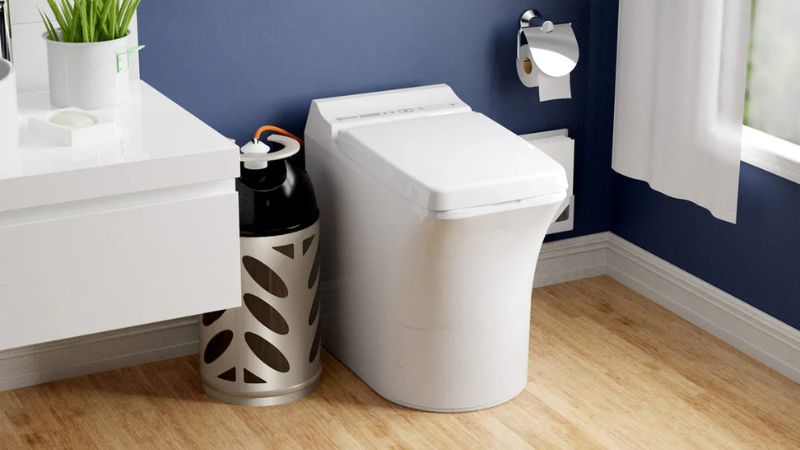“Which one do you have?”, “How is it working for you?” and “Have you heard of this or that new toilet?” are common questions whenever tiny house people come together – and it’s often one of the biggest and most daunting questions faced by those considering going tiny.
But fear not. We’re here to help. Over the following five issues of the Tiny Living Magazine, we will take a closer look at the different toilet options and their pros and cons. We will cover:
• Composting toilets
• Incinerating toilets
• Cassette toilets
• Standard flush toilets
• Other, less common options
Alright, let’s get into it. Following on from last months TINY TOILET TALK about Composting Toilets, another popular option is incinerating toilets – especially the new gas-operated ones, as they don’t require a lot of power.
Incinerating toilets are self-contained systems designed to safely dispose of human waste through incineration. They utilise electrical or gas-powered mechanisms to heat waste to high temperatures, leaving behind nothing but a small amount of sterile ash that can be disposed of together with regular household waste, or it can be used as fertiliser in the garden.
THE ADVANTAGES OF INCINERATING TOILETS IN A TINY HOUSE
Waterless: Unlike traditional flush toilets, incinerating toilets operate without water, making them environmentally friendly and a great option in tiny houses where water availability is limited.
No plumbing or septic system: These toilets eliminate the need for complex plumbing and septic systems, simplifying installation and reducing maintenance requirements.
Odour control: Modern incinerating toilets are designed with odour control mechanisms, ensuring a fresh and odour free environment in your tiny house. However, note that this is not always the case with older models.
Electric or gas: With options for both electric and gas-operated models, you can choose the most suitable incinerating toilet based on your energy preferences and availability in your area.
Easy waste disposal: Incinerated waste turns into a small amount of ash, which is easy to handle and dispose of, typically in regular household waste bins.
THE DISADVANTAGES OF INCINERATING TOILETS IN A TINY HOUSE
Energy dependency: Electrical incinerating toilets rely on a power source, which may not be readily available in off-grid scenarios. Gas-operated models provide an alternative but require a supply of propane or natural gas. The power or gas requirement is often significant, so it’s important to consider the availability and cost of power or gas when choosing an incinerating toilet.
Cost: Incinerating toilets tend to be more expensive upfront compared to other options, such as composting or cassette toilets. In addition, the high power or gas usage adds to cost over time.
Learning curve: Operating and maintaining an incinerating toilet might require some adjustment and understanding of the specific system, especially for first-time users.
Regular maintenance: While they generally have low maintenance needs, incinerating toilets do require periodic cleaning and ash disposal to ensure optimal performance.
Don’t want to wait till the next issue of the Tiny Living Magazine to learn more about the other toilet options? No problem. Head on over to the Tiny House Hub and download our Guide; Which Toilet is Best for Your Tiny House?


